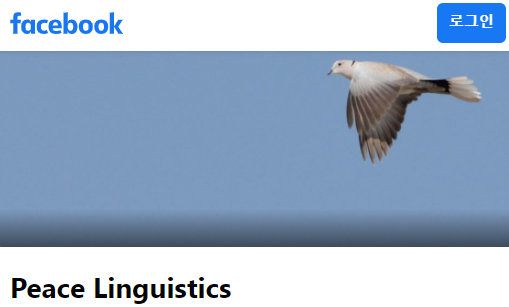Teaching and Learning . . . and Well-being
Interview with Jocelyn Wright.
When we think about teaching and learning, we think of all the time and effort teachers put into lesson planning and the ever-present administrative work, and we think of all the time students spend hunched over their textbooks, doing homework, and cramming for tests. Little do we think of our own well-being or that of our students. And this was true even in pre-Covid times. The past year-plus of the pandemic has added an extra dimension of emotional stress to everyone, including teachers and students. This has recently been highlighted by tennis star Naomi Osaka withdrawing from a major tennis tournament for “mental health” concerns. The Gwangju News recently caught up with Jocelyn Wright to discuss well-being, centering especially on students and teachers. — Ed.
Gwangju News (GN): Hello, Jocelyn. Thank you for granting this interview. When we first talked about the topic for this interview, you suggested that the focus be on well-being.
Jocelyn Wright: I did, so let me start by recounting a story to explain why. At one point deep into COVID-19 last year, I heard about a marathon. This one was exceptional for two reasons. The first was that it did not require any actual running! The second was that, while super easy, it was also very impactful. It basically involved sharing cards with people around us on which two simple words were written: “You Matter.” Stories on the campaign website [https://youmattermarathon.com/] attest to the benefits both for the givers and the receivers.
In many ways, the educational enterprise is much like a wide-scale campaign, and I genuinely believe that it is most successful when all parties give and receive in ways that are mutually beneficial for their well-being.
GN: Could you tell us what the scope of well-being entails within the educational context?
Jocelyn: Sure. Recently, I asked students in a composition class to write about a wellness dimension where they faced a challenge personally but felt optimistic about change. As a prompt, I showed them a wheel with eight dimensions: physical, emotional, mental, spiritual, financial, vocational, social, and environmental. I think that sums the holistic concept up pretty well and explains why, even under “normal” circumstances, none of us – whether teachers, students, or administrators – comes to school burden-free every day.
Given this, it is probably safe to say that the pandemic has affected all of us, although to different extents and in diverse ways at distinct times. Psychologically, the experience may have hardened some of us, or made us more resilient and determined. However, others may have felt more anxious, stressed, or vulnerable. Socially, some of us may have benefited from greater closeness and connection to loved ones, for instance, to family members. Yet, others may have felt lonely and isolated, particularly if living alone. Our physical health during the pandemic may have changed for better or for worse as we have adopted new eating, exercising, and sleeping habits. For some of us, adapting to altered environments, such as online teaching, learning, or other work, might have been an exciting challenge, a time of greater growth, and possibly even freedom; for others, it might have been downright turbulent. Some of us may have been able to focus better and work more creatively. On the other hand, others may have had greater difficulty than usual concentrating on tasks. Financially, we or those we depend on may have been hit by the economic crisis, while others more fortunate may have remained more secure or even seen our bank accounts grow. In trying times, certain people seek out and obtain more spiritual guidance. Some of us, though, may have felt hopeless and without solace. Further, the sudden changes provoked by the pandemic and its unclear duration may have been dream shattering for some. (A case in point is a couple of students in my major who had been preparing to become flight attendants and were grounded before takeoff.) Of course, this turn of events has also prompted others to reimagine new career prospects and seek out relevant training. While few, these examples highlight a range of factors that might impact the well-being of individuals in the educational context at any given moment.
GN: With all of these diverse challenges, how can we contribute to student well-being in the classroom? What practices and classroom tasks or activities can the EFL teacher – or any teacher for that matter – conduct to promote student well-being?
Jocelyn: A good place to start is with deliberate kindness. Taking time to learn students’ names and a bit about them: where they live, whether they commute to school, their interests and needs, who their friends are, whether they work, and so on. Doing this early on works well for me. Daily check-ins are also helpful. I always go to class early, so I can greet most students personally before starting class. Some students take advantage of this time to tell me what is going on with them. Taking time to arrange the classroom is basic practice, and I prioritize it, as it contributes to comfort. Especially over the past year, students have been more alone in their studies, so I have made a point of prioritizing social time for them at the beginning of each class. It is easier for them to work together and with me after we have first connected. Many teachers are already familiar with instruction-checking questions (ICQs) and comprehension-checking questions (CCQs), but affect-checking questions (ACQs), or “temperature checks,” are also useful. These are not always necessary, however. For instance, when I see students looking tired, especially around exam periods, I sometimes just stop a class and ask students to stretch. Other times, I purposefully include breathing, meditative, or movement activities into lessons. Additionally, when I have international students or those from multicultural families in my classes, I always aim for inclusion and try to celebrate the diversity.
A lot of teaching work is done before entering or after exiting the classroom. When designing my courses, I try to create experiences that will evidently be useful or personally meaningful in some way. The truth is that I am blessed to have a lot of freedom, so I have had the opportunity to teach many kinds of courses, currently including ones centered around computer skills, interpersonal communication, intercultural leadership, reflective practice, critical pedagogy, and writing and research methods. Then, in the spirit of eclecticism, when planning my lessons, I blend theory and practice, mix teacher-centered and learner-centered phases, combine deductive and inductive learning techniques, splice comprehension and production activities, and offer time for individual as well as group work. While I have to plan my syllabi before the beginning of each semester, I revise them as I go along to adapt them to the level, learning speed, and requests of each class. Increasingly, too, I have replaced traditional midterm and final exams with scaffolded alternative assessments, such as multimodal portfolios and projects.
Of course, my job involves responsibilities aside from teaching. Outside of class, I attempt to make myself approachable and available to meet with students, whether for club activities, advising appointments, special events, or informal chats. While expressing themselves in English is a challenge for a few students, others have revealed that they feel more comfortable talking with me, as a foreigner, about certain topics.
GN: You do a lot directly lesson-related and otherwise to accommodate the well-being of your students. What about teacher well-being? What should the teacher be aware of to ensure their own well-being? And how might the teacher contribute to the well-being of their colleagues?
Jocelyn: I am glad you mentioned this. We matter, too! Indeed, with so many responsibilities, including administrative and other duties not yet discussed even pre-COVID-19, teachers could sometimes feel overwhelmed or burnt out. When studying nonviolent communication, a point that really hit home was the emphasis on self-care. It is not easy to help others when our own needs are unfulfilled. Besides getting enough daily nutrition, rest, exercise, and fresh air, we need things like peace, play, and meaning. Interestingly, we might consider pacing and spacing, discovery activities and gamification, and customization in our lessons but neglect them in our own lives!
GN: “Pacing and spacing”?
Jocelyn: Well, yes, paying attention to our own rhythms, giving ourselves breaks – temporal and spatial – varying our own activities, etc. Moreover, teachers also need a balance between autonomy and connection. Harmony in relationships as a result of honest expression and empathic listening can go a long way towards contributing to one’s own well-being and improve workplace dynamics. Through sustainable practices, like compassionate leadership, we can also make a positive difference in each other’s lives.
GN: You mentioned nonviolent communication, and I know that you have also been involved in promoting the area of peace linguistics. Peace linguist Francisco Gomes de Matos has talked about using foreign languages for “communicative peace,” which involves communicating constructively. According to him, “Communicating well means communicating for the well-being of humankind” [Gomes de Matos, 2000, p. 343].
Jocelyn: Yes! Communicating constructively is a skill, and one that requires mindfulness and continuous practice, and this is actually true whether we are novice or experienced language users! However, how we treat ourselves and others – including what we think, say, and do – can transform worlds. Peace linguistics is still an emerging area but one with an enormous potential to promote well-being. Focused more purely on linguistic analysis and more practically on peacebuilding applications in numerous areas (language education being only one), peace linguistics can play an important role in contributing to harmony and social justice, two factors that contribute to well-being.
GN: A couple of issues back, cosmopolitanism in the EFL classroom was discussed in this column. Do you see any dovetailing between cosmopolitanism and well-being in the educational context?
Jocelyn: Certainly. If the school is a microcosm of society, and one of its aims is to cultivate healthy global citizens (kosmopolitēs), there must be a connection. Moral cosmopolitanism, as I understand it, focuses on hospitality and helping others and is guided by a certain ethic of care. If we can successfully create climates that are humanistic and humanizing, personal and social well-being will surely be enhanced.
GN: Some of our readers probably already know you or know about you because you have been teaching English at Mokpo National University for many years now and have led the Gwangju-Jeonnam KOTESOL Reflective Practice group since 2013, but is there anything new you might wish to share with us?
Jocelyn: Yes, we talked about peace linguistics above. Incredibly, this is a field I only happened to come across by accident in 2018, and which many have never heard of. Having spent the past few years trying to learn as much as possible about the discipline, I have become persuaded that it is truly valuable. As a result, I decided to create an international group to connect scholars and practitioners interested in peace linguistics and peace language education to initiate dialogue and research. If interested, you can find us on Facebook [https://www.facebook.com/groups/peacelinguistics].

GN: Peace linguistics, teacher and student well-being, cosmopolitanism, nonviolent communication, compassionate leadership, and reflective practice – at first thought, these might seem dissimilar, but you have woven them all together for us, showing how we can put them into practice to enhance our well-being as teachers and that of our students. Thank you, Jocelyn.
Interviewed by David Shaffer, Gwangju News’ editor-in-chief.
Graphics and photograph courtesy of Jocelyn Wright.
Reference
Gomes de Matos, F. (2000). Harmonizing and humanizing political discourse: The contribution of peace linguists. Peace and Conflict: Journal of Peace Psychology, 6(4), 339–344.







